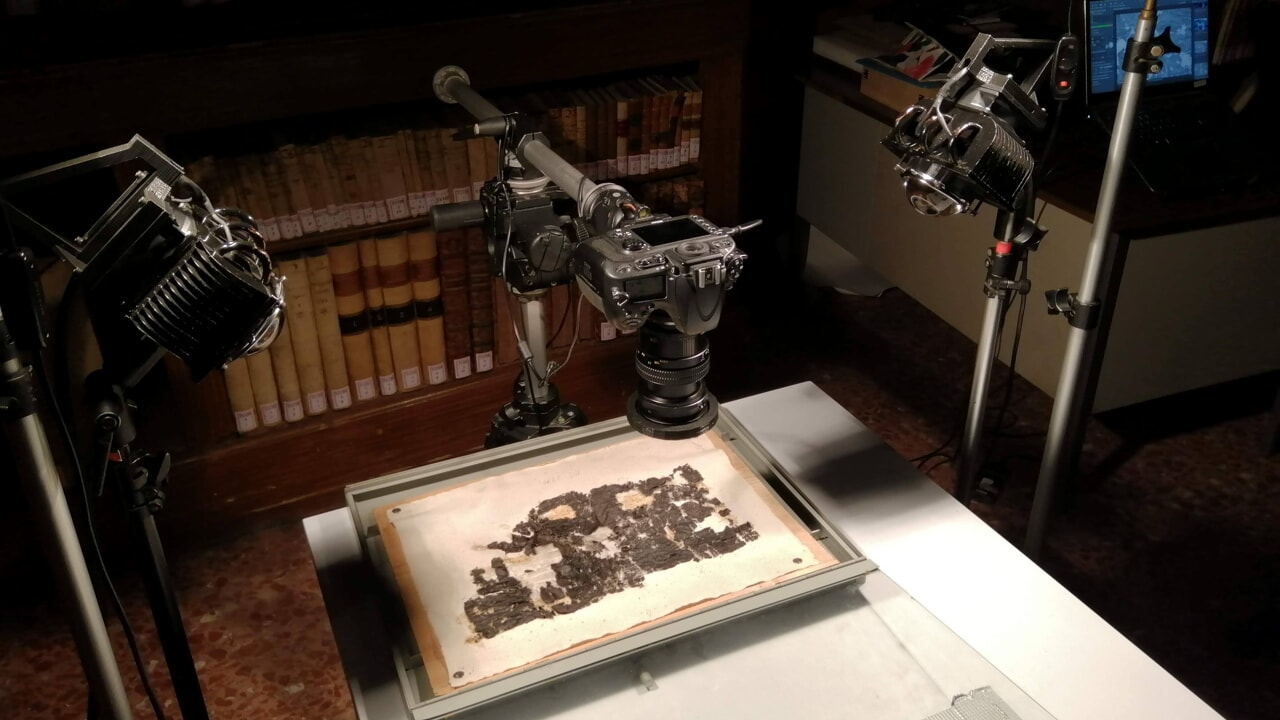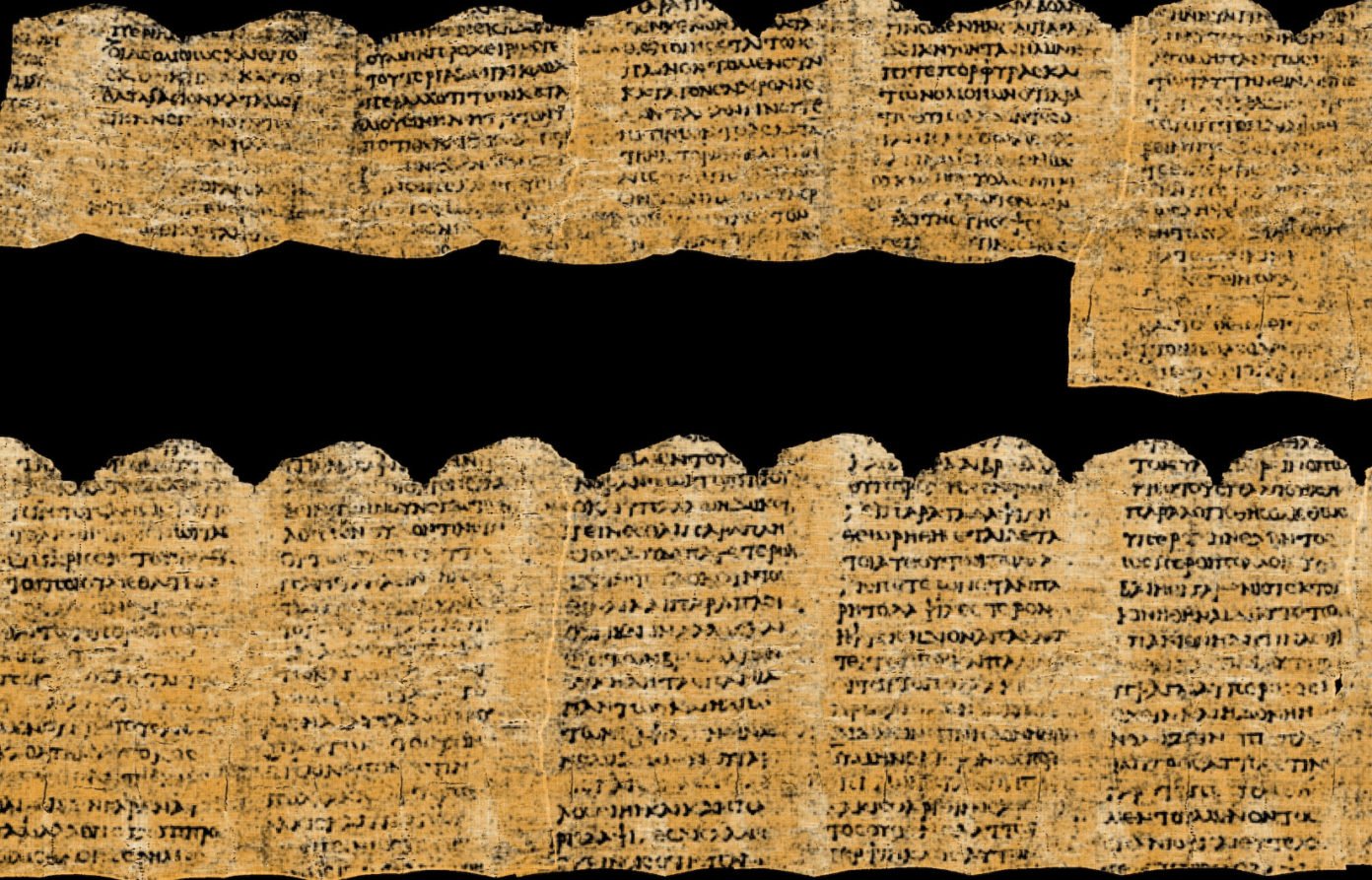Plato’s Final Hours revealed in Scroll Buried at Mount Vesuvius

The final hours of Platoare brought to light by newly deciphered passages from a papyrus scroll that was buried beneath layers of volcanic ash after the 79 AD eruption of Mount Vesuvius.
The ancient scroll was found to contain a previously unknown text detailing how the Greek philosopher spent his last evening, describing how he listened to music played on a flute by a Thracian slave girl.
Despite battling a fever and being on the brink of death, Plato – who was known as a disciple of Socrates and a mentor to Aristotle died in Athens around 348 BC – retained enough lucidity to critique the musician for her lack of rhythm, the account suggests.

Credit: Vesuvius Challenge / scrollprize.org
The decoded words also suggest Plato’s burial site was in his designated garden in the Academy of Athens, the world’s first university, which he founded, adjacent to the Mouseion. Previously, it was only known in general terms that he was buried within the academy.
In a presentation of the research findings at the National Library of Naples, Prof Graziano Ranocchia, of the University of Pisa, who led the team responsible for unearthing the carbonised scroll, described the discovery as an “extraordinary outcome that enriches our understanding of ancient history”.
The text also reveals that Plato was sold into slavery on the island of Aegina, possibly as early as 404BC when the Spartans conquered the island, or alternatively in 399BC, shortly after Socrates’ passing.
“Until now it was believed that Plato was sold into slavery in 387BC during his sojourn in Sicily at the court of Dionysius I of Syracuse,” Ranocchia said.
“For the first time, we have been able to read sequences of hidden letters from the papyri that were enfolded within multiple layers, stuck to each other over the centuries, through an unrolling process using a mechanical technique that disrupted whole fragments of text.”
Ranocchia said the ability to identify these layers and virtually realign them to their original positions to restore textual continuity represented a significant advance in terms of gathering vast amounts of information.
He said the work was still in its nascent stages and the full impact would only become apparent in the coming years.
The scroll was preserved in a lavish villa in Herculaneum and discovered in 1750, and is believed to have belonged to Julius Caesar’s father-in-law.
Over the years, scholars have tried to decipher the scrolls found in this villa, known as the Villa of the Papyri.
